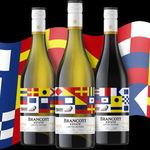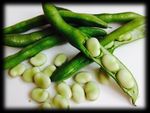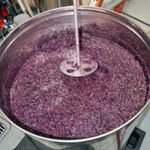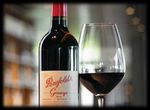WINETALK - Hamilton Wine Connoisseurs' Club
←
→
Page content transcription
If your browser does not render page correctly, please read the page content below
WINETALK
341 WINE CONNOISSEURS CLUB OF HAMILTON October 2019
Coming Functions 200 YEARS OF NEW ZEALAND WINE
Oct 13 Cellar wines tasting - TBC
Nov 10 Maison Noire tasting September 25, 2019 was a momentous day for the New Zealand
Dec 07 Xmas Function Wine Industry as it celebrated 200 years since the first vines were
Jan xx January BBQ – date TBC planted in front of the Stone Store at Kerikeri in the Bay of Islands.
Feb xx TBC Several members of the New Zealand Winegrowers Institute, local
dignitaries and winemakers re-enacted the plantings
by Samuel Marsden 200 years ago at Kerikeri.
Several different types of vines were planted by the
Reverend Samuel Marsden, who was sent to establish
Anglican Mission Stations in New Zealand. On 25
September, 1819, he recorded in his diary "Should the
vines succeed, it will prove of vast importance in this
part of the world." Little did he know but he was planting the seeds of what is now a $1.83 billion a year
export earner.
However, he was better at keeping a diary than looking after his vines. Most of the vines were eaten by goats
before they had a chance to get established. A rather inauspicious start to our wine industry.
"I think this is a hard case story," says Peter Jones, General Manager of The Landing Wines in Northland. "It
almost symbolises New Zealand - bringing in some grapes and bringing in some goats!' The story also reflects
New Zealand's pioneering spirit, Jones says. "Somebody came in and had a go, it didn't work - so somebody
else had a go - and it did work."
Fortunately New Zealand's next attempt at winemaking was a success. The
country's first British Resident, James Busby, started a small vineyard at
Waitangi, near what is now known as the Treaty House. Busby was an
enthusiastic supporter of wine production and when he was eventually sent to
NSW in Australia, he helped establish vineyards in the Hunter Valley. The wine
produced by Busby received what was arguably New Zealand's first wine
review, when French explorer Dumont d'Urville described it in 1840 as ".....light
white wine, bright and intense, which I found to have an excellent taste and
which I drank with pleasure." So even though the goats attacked, it hasn't
stopped the wine industry from flourishing, showing the resilience of the
industry.
MISSION ESTATE IS ESTABLISHED
The establishment of New Zealand's oldest still running winery, Mission Estate in Hawkes Bay, was not far
behind the country's first recorded wine. French Marist brothers established the Mission in 1851, planting
vines from France to produce wine for both religious use as well as enjoyment. Mission Estate recorded its
first commercial sale in 1870.
www.hamiltonwineclub.co.nzWinemaker Paul Mooney says it is important to reflect on the industry's unique 200 year history. "The
industry should be very proud of its wine-making history.” The Estate's history plays a vital role in the wine
story today with Mooney having been taught his craft by the French Marists. "It is the people in the wine
industry, great people who have shown leadership and innovation, collaboration and determination to
produce the very best wines in New Zealand and lead the way for others to follow." And follow they did......
MARLBOROUGH SAUVIGNON BLANC
Love it or hate it, Sauvignon Blanc is our most famous wine. New Zealand's prosperity in exporting wines
starts with one variety in one place - Sauvignon Blanc grown in Marlborough.
The South Island was initially considered too cold to
grow grapes, but then Montana Managing Director,
Frank Yukich, descendant of Croatian winemakers who
established themselves in West Auckland, decided to go
against the grain on a Marlborough Farm, forming in the
process what is now Brancott Estate.
The first vines were planted on August 28, 1973 to much
fanfare with the Auckland Star recording the historic
planting. The fanfare was justified with Sauvignon Blanc
becoming a virtual overnight success after the first
vintage was made in 1979, catapulting New Zealand
wines onto the world stage. US wine writer Matt Kramer recently said Marlborough's Sauvignon Blancs
success stood out internationally. "No one anywhere has achieved what has been achieved in Marlborough. It
is an international success story." The rest as they say, is history.
Brian Main and I have been tasting some Brancott Estate Sav Blancs to celebrate Frank Yukich's taking a
massive gamble and also celebrating our greatest success in our 200 year history.
Brancott have released three Special Limited Edition 2018 wines to celebrate being chosen as the exclusive
supplier of wine to Team New Zealand for the 36th Americas Cup, 2021 in Auckland. They have different
brightly coloured labels with nautical flags. It is an interesting story.
Three team members chose each wine, 2 Sauvignon Blancs and a
Pinot Noir and have signed the labels. They visited the winery and
talked to the winemakers and owners before making their
choices. The labels are a standout on the shelves so I
thought I would taste one of these 2018 wines and also a
very new release of a 2019 Sav Blanc from Brancott.
The 2018 Americas Cup Sav Blanc was fresh, fruity with all
the characteristics of a Marlborough grown wine. Brian
preferred this to the newer 2019 (more guts according to
him). The 2019 early release was the one I liked the most
as it was fresh, light, typical fruit driven with hints of
passionfruit, lime and grasses. Beautiful and refreshing.
The beauty of this is it is on special at Countdown for $11.
What a bargain. There are of course different levels of
their wines, but for those Sauvignon lovers, this was a beauty. If this 2019 is typical of what we can expect
from the 2019 Marlborough vintage, I am very excited.
Great wine to celebrate the 200 year history of our winemaking industry and our biggest star.
www.hamiltonwineclub.co.nzSPRING IS HERE
At this stage you know that spring is just around the corner - chilly nights, cold mornings, sunny/rainy days,
big winds, the return of green to the garden and short sleeves for the enthusiastic.
The weather does affect people's mood. As Mother Nature's mood
changes for the better so does your food and wine outlook.
Asparagus, broad beans, avocadoes and
great lamb and fish - your wine drinking
turns to fresh whites, delicate pinks and
soft reds, the colours of the season.
Sauvignon Blanc with goat's cheese,
broad beans, basil lemon and mint; Rose′
with the new season’s sweetest tomatoes; Cabernet Sauvignon with sweet
spring lamb. When spring finally arrives, fresh young wines create some of the
best wine and food combinations. We no longer need stews, thick soups,
comfort food and heavy red wines. Let's enjoy the change of season and
look forward to some lighter wines and fresh seasonal food. And then
before you know it summer, sandals and salads are here.....then there are
the gorgeous sparklings..... and then there are all the whites and pinks
with the prawns from the barbie.....then there is the Pinot Noir with the
steak from the barbie.............so much to look forward to.
WINE AND CHOCOLATE
Some say it can't be done, pairing wine with chocolate but if you choose the right wine to complement the
right chocolate, it can be a remarkable pairing. Perhaps this is because the process of chocolate making is very
similar to winemaking - both cocoa beans and grapes are
fermented with the same yeast. No wonder there are so many
wine and chocolate lovers. As far as I am concerned, as soon as I
have a glass of Aussie Shiraz, I am searching for the dark chocolate.
Here's a helping hand for those difficult choices and pairings.
Mainly taken from Wine Folly and The Real Review.
WHITE CHOCOLATE: Isn't really chocolate because it doesn't include cocoa, just chocolate fat. This little
known fact makes it one of the most versatile pairings with wine. Have it with a slightly sweet sparkling Italian
white, Riesling or a Noble wine.
MILK CHOCOLATE: Pair with a rich, sweet fortified wine, Sherry, Port or Asti. Macadamia nuts are suggested
to be excellent with this pairing.
DARK CHOCOLATE: (decadence) - now you're talking. Dense, full flavoured
chocolate with an Aussie Shiraz from the Barossa or McLaren Vale, and a
Cabernet Sauvignon. Dark chocolate makes red wines taste softer and slightly
mellower. Not good with sweet or white wines. Chilli Chocolate is also
excellent with these reds and a Pinot Noir.
Apparently the best way to eat chocolate is break it up into small pieces and let it melt on your tongue - do
not chew. Hope this all helps and you enjoy the pairings.
www.hamiltonwineclub.co.nzWINESPEAK
LEES: Sediment at the bottom of a barrel, tank or vat consisting of yeast or other solids.
NOBLE ROT: A rot that shrivels and concentrates sugar in grapes, producing lusciously sweet wines.
WEIGHT: Related to BODY; both red and white wine can range from light to heavy in weight.
WINEMAKING IN A NUTSHELL:
Pick 'em,
Crush 'em,
Ferment 'em
Bottle 'em
Drink ‘em
Happy Spring drinking and happy 200th birthday of the NZ Wine Industry.
Gay Main
www.hamiltonwineclub.co.nzYou can also read



























































